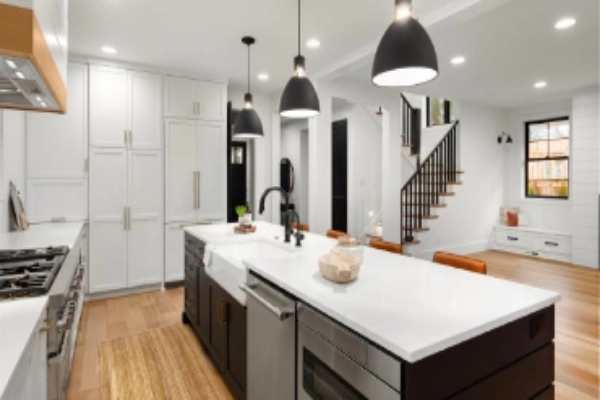
Mr. Electric explains IC rating for lighting, which ensures safe installation of recessed lights near insulation
|
The definition of an IC-rated or insulation contact-rated light fixture is one that is safe to come in contact with insulation. Most lights generate heat, and if your lighting isn’t IC rated, there is an increased fire risk if the fixture comes in contact with any insulation. Because of this high fire risk, most building codes require all lighting to be IC-rated.
Related Topic: Why Do My Light Bulbs Keep Burning Out?.
What Makes a Recessed Light IC Rated?
IC rating depends on the lighting system's barriers to provide space between the light and insulation, primarily fiberglass or cellulose insulation. This is usually created by having two layers of metal casing separated by a pocket of air to diffuse the heat created by the light. Because of the gap, the outer layer of metal doesn’t heat up to a temperature that would be considered dangerous.
Are Surface Lights Required to Be IC-Rated?
Recessed lights must be IC-rated, but normal hanging light fixtures aren’t IC-rated because they don’t make direct contact with insulation. As you plan your upcoming lighting projects, just remember that your recessed lighting will require an IC rating, while surface-mounted lights won’t.
Related Topic: Avoid the Most Common Electrical Code Violations.
How To Tell If Recessed Lights Are IC Rated
If you’re unsure of the rating of your lights, you’ll need to go up to your attic to check for any label stickers or other markings from the attic side. However, that isn’t always an option. With the light off, go up on a ladder and remove the bulb to observe the housing more easily. There are a few key things to look for to identify whether your lighting is IC rated:
- The product or serial number will include an IC or an IC-AT. The IC stands for “insulation contact”, and AT stands for “airtight.”
- If your lighting fixture has any holes, slits, or other manufactured openings, then your light won’t be IC-rated.
How To Insulate Around IC-Rated Recessed Lights
If you need to replace the insulation around your lighting, or if you’ve discovered that you need more insulation around your lights, taking the proper steps to add insulation will ensure your home stays safe.
- Identify that your lights are, in fact, IC-rated. If you check your lights and find that they aren’t IC rated, before moving forward, you will need to have any non-IC-rated lighting replaced.
- If your can light is IC rated, next, you’ll want to identify whether it’s airtight or not. Airtight can lighting is more energy-efficient and, while not necessary, is a good feature to have. You can use caulk to close the holes in your lighting’s can, making it safe to insulate.
- Finally, you’ll be able to add your insulation. It’s best to use loose-fill insulation and make sure that you fill the insulation until it is even with the other insulation in your attic.
Need Help with Your IC-Rated Lighting?
If you are unsure or unable to check if your lighting is rating IC, or you’re not sure what to do, your local Mr. Electric can help. Our trained and experienced service professionals can help identify your lighting rating, switch them out if needed, and ensure your system is safe and properly installed. To learn more, give us a call or schedule an appointment online today.
